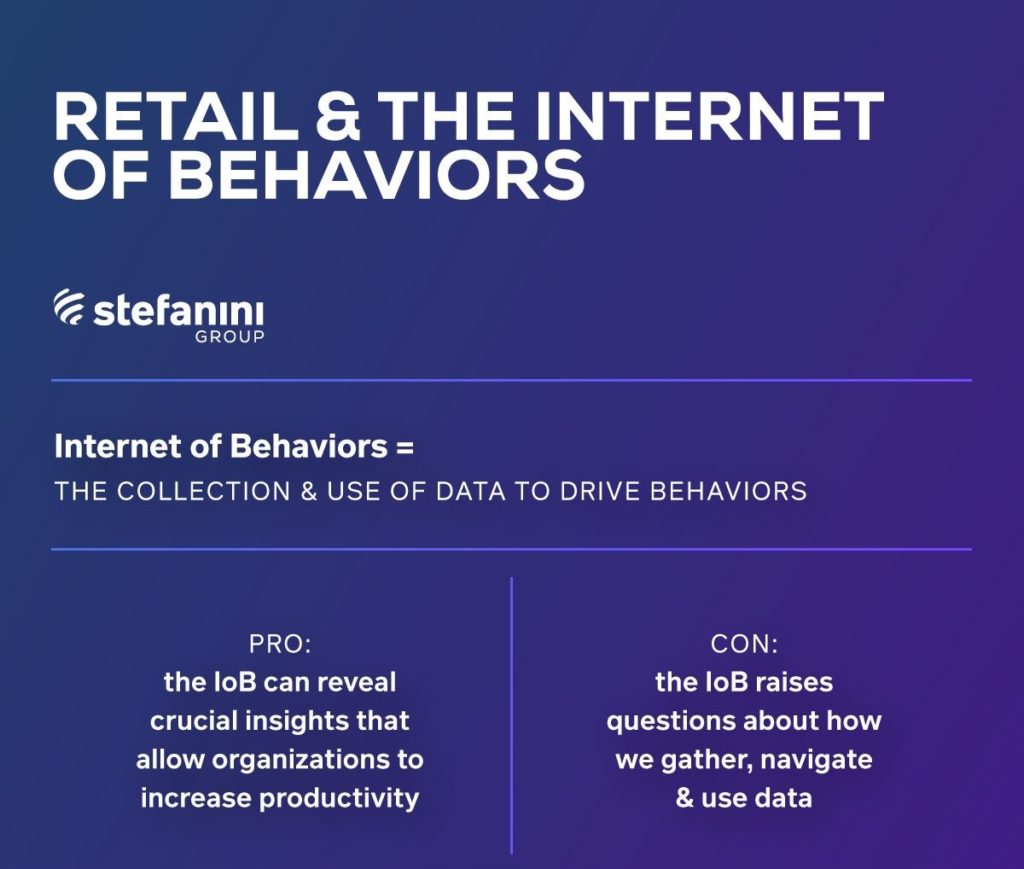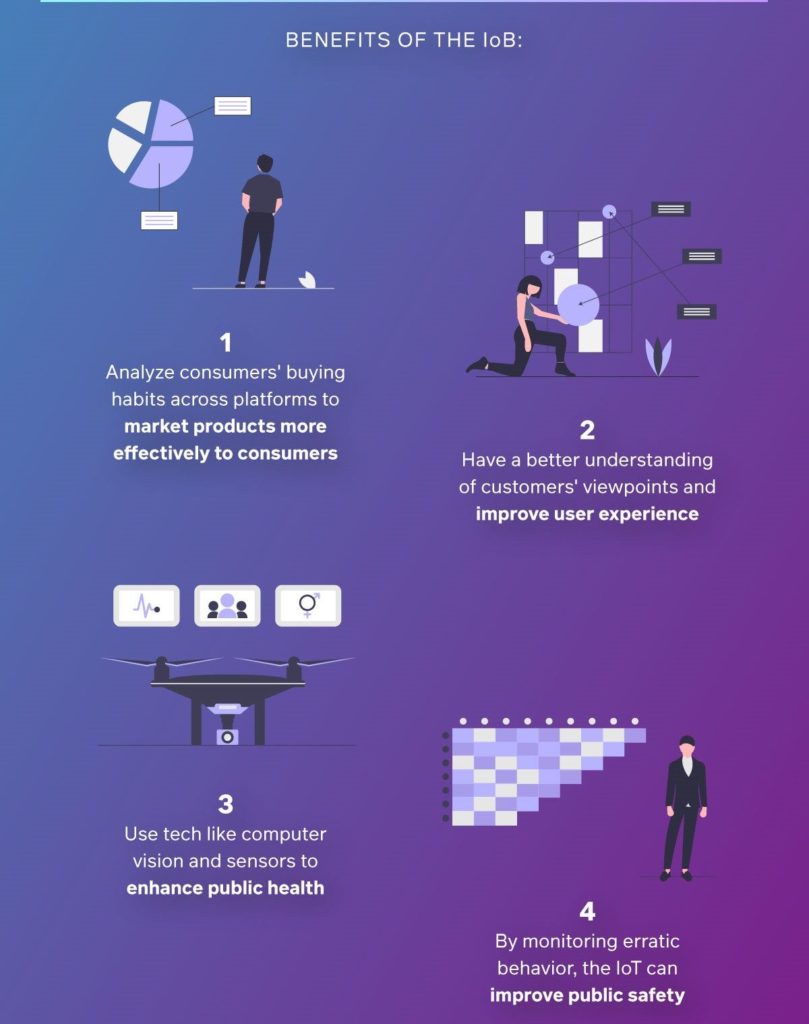Artificial intelligence and IoT-connected devices are being found more and more in retail businesses. Learn how customer experience is being reimagined today!
The retail industry is no stranger to the term ‘omnichannel;’ in fact, McKinsey writes that even pre-pandemic, most strategic retailers already were blending physical and digital channels to engage consumers on their preferred channel.
Enter COVID-19. Thanks to the virus, in-person interaction has changed significantly, with ecommerce sales in areas like apparel and grocery both rising. Yet, the journey forward is still fraught with uncertainty.
Fortunately, the future of retail still puts the consumer first.
How can you enhance customer experience while integrating data, artificial intelligence, and IoT technologies? Read on for the answer!
Retail Takes Advantage of AI and IoT
It’s no surprise that the pandemic caused an explosion in online shopping, with online retail orders increasing by 146% in April 2020 when compared to April 2019. Now, retailers are embracing digital-first approaches in order to maintain COVID-19 safety ordinances while also staying ahead of future trends.
With AI and IoT solutions, retail is reimagining the way it approaches customer experience, drives sales, and ensures the safety of both employees and consumers in stores.
AI
According to Forbes, by 2027, AI in the retail market is predicted to hit $19.9 billion. In fact, many retail giants are already implementing AI into their shopping experiences. Visual search, computer vision, and AI-backed chatbots that can check inventory, provide store navigation, and escalate interactions to human representatives are just a few examples of common AI applications.
More common applications include:
- Automating in-store operations and reducing operational expenses through approaches like cashier-less payment, replenishing stock with real-time stock monitoring, and digitizing store display and trial rooms.
- Algorithms that provide valuable information like pricing strategy.
- Predicting demands for products by scrutinizing historical sales, location, buying trends, and more.
- Providing personalized experiences to consumers, with technologies like biometric and face recognition identifying consumers revisiting a store and remembering their likes and dislikes.
- Using machine learning to simplify product discovery for consumers by helping consumers find the best deal.
- Automating back-office activities and using robotics for quality checks.
What do these solutions all have in common? They are customer-centric and augment human workers’ responsibilities, helping them be even more efficient in their roles.
IoT
IoT is making waves for its ability to leverage data-driven approaches and turbocharge core operations in retail. Further, IoT-connected devices can enhance the customer experience and improve business efficiencies.
According to IoT Analytics, there are approximately 7 billion IoT-connected devices today, which is projected to reach 25 billion by 2021. Most notably, a large chunk of these devices will be used by retailers.
Common applications for IoT sensors include:
- Monitoring customer satisfaction by providing real-time shopper satisfaction insights.
- Monitoring goods throughout the entire store, which provides value to businesses in supply chain and logistics.
- In the food and beverage industry, IoT technology is checking the temperature of storage spaces and helping ensure food doesn’t spoil.
- Tracking assets like lost shopping carts and baskets.
How is AI being used to stop cyber attacks? Get the details here!
Retail and the Internet of Behaviors
While a huge amount of data has been created since humans started working closely with technology, organizations have not had the tools needed to analyze this data and mine it for insights.
Enter the Internet of Behaviors (IoB), which was named by Gartner as one the top strategic technology trends that organizations need to explore in 2021.
What is the Internet of Behaviors?
Gartner initially announced that the Internet of Behaviors can be defined as the collection and use of data to drive behaviors. The term builds on the Internet of Things’ capabilities to produce detailed use and behavioral data gathered – and crunched – to produce a detailed picture of the consumer. Further, as organizations improve not only the amount of data they capture, but also how they combine data from different sources and use that data, the IoB will continue to affect how organizations interact with people.

In theory, IoB could reveal crucial insights to organizations that allow them to increase productivity, monitor compliance with COVID-19 safety protocols, and more. At the same time, the IoB raises questions about how we gather, navigate, and use data, especially as we collect more of it. Now, companies know your interests, dislikes, and the way you purchase.
While IoB is an important trend for companies to take notice of, retailers need to be vigilant in the ways they are protecting the data they collect.
How Can the IoB Benefit Retailers?
40 percent of people globally (more than three billion people) will have their behavior tracked through the IoB by 2023. Further, by the end of 2025, more than half of the world’s population will be subject to at least one IoB program, whether it be commercial or governmental.
The following are ways your business can start leveraging IoB to better serve your consumers and employees:

1. Market products more effectively to consumers: Many retailers have already been using analytics tools to find insights that reveal common consumer behaviors. With the IoB, retailers are able to analyze consumers’ buying habits across platforms, gain access to previously unattainable data and redefine the value chain, and even provide real-time point-of-sale notifications and targeted ads.
2. Improve user experience: Designing UX is a crucial part of sales. With the knowledge provided by IoB, organizations have a better understanding of people’s attitudes toward specific products or services, making it even easier to resolve consumer concerns.
3. Enhance public health: Companies in the manufacturing sector are already using sensors and RFID tags to determine if on-site employees are washing their hands regularly. Further, computer vision can determine if employees are complying with mask protocol or social distancing directives. And in the health industry, providers can measure the activation and engagement efforts made by patients.
4. Improve public safety: the monitoring of public safety is creating exciting new opportunities across industries. In one application, vehicle telematics is being deployed to track driver behavior and flagging behaviors that are erratic or dangerous.
We are delivering connected solutions for retail. Get an overview here.
How Stefanini Can Help
Creating positive customer experiences is our mission at The Stefanini Group. To attain this goal, we capitalize on data analytics and our operational expertise to improve IT interactions. Our capabilities in IoT and AI allows us to build customized solutions for your business that assist with this endeavor. Further, we understand the importance of analyzing the end user’s experience, perspective, and voice to build positive journeys.
Our programs focus on the interaction between end users and IT services, listening to the customer’s voice at all touch points. With people, processes, and technology working together, we are able to deliver cost savings, efficient processes, and improved levels of service for your business’ end users.
Are you ready to learn more? We are standing by. Contact us today to connect with one of our experts!



















